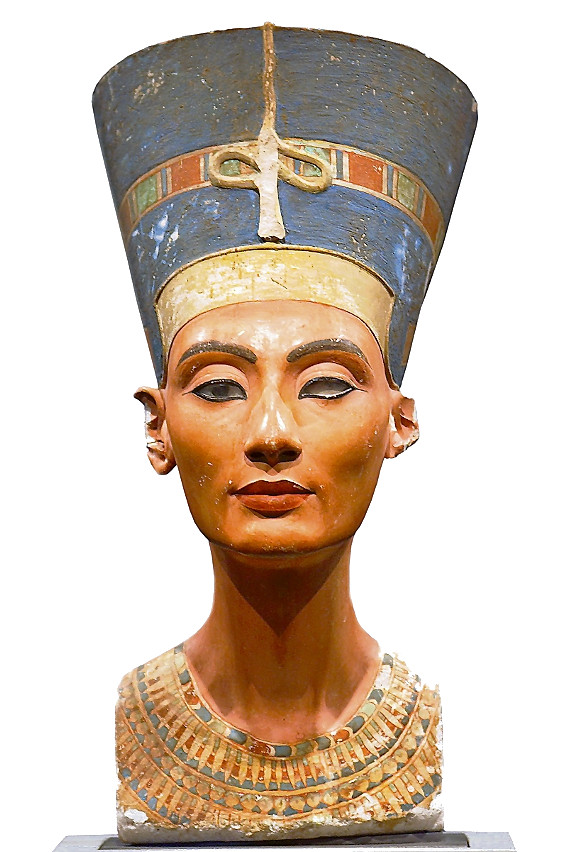inkdrop is an artsy bitmap to vector converter controlled via a GTK4 or web UI.
The CLI binary is called inkdrop-cli and reads almost any image bitmap format
via the --input parameter and outputs an SVG document given by the --output
parameter. Let's take this image of the Nefertiti bust, cropped and the
background turned to pure white:
Using the --draw-points parameter we can output all sampled points. The number
of sampled points can be controlled with the --num-points parameter. Calling
$ inkdrop-cli --input nofretete.png \
--output output.svg \
--draw-points \
--num-points 20000
gives us
It resembles the input image but due to the stochastic nature, it is a bit noisy. We can move these initial points using the Weighted Voronoi method. Using
$ inkdrop --input nofretete.png \
--output output.svg \
--draw-points \
--num-points 20000 \
--voronoi-iterations 100
we get points that much better reflect the structure of the original image:
By leaving out the --draw-points parameter, all points will be connected.
Without further adjustments the nearest neighbor tour is chosen which will be
ugly most of the time because the path crosses itself. To fix that use the
--tsp-improvement parameter which optimizes the tour using the 2-opt algorithm
until the improvement is not better than the parameter given. So our final
command line
$ inkdrop-cli --input nofretete.png \
--output output.svg \
--num-points 20000 \
--voronoi-iterations 100
--tsp-improvement 0.001
gives us the following output:
Call inkdrop-ui and play around with the same parameters as above.
The web crate contains a web app based on Yew with a demo
hosted here. Run make and serve the content
with a server of your choice. python -m http.server could be a simple option.




